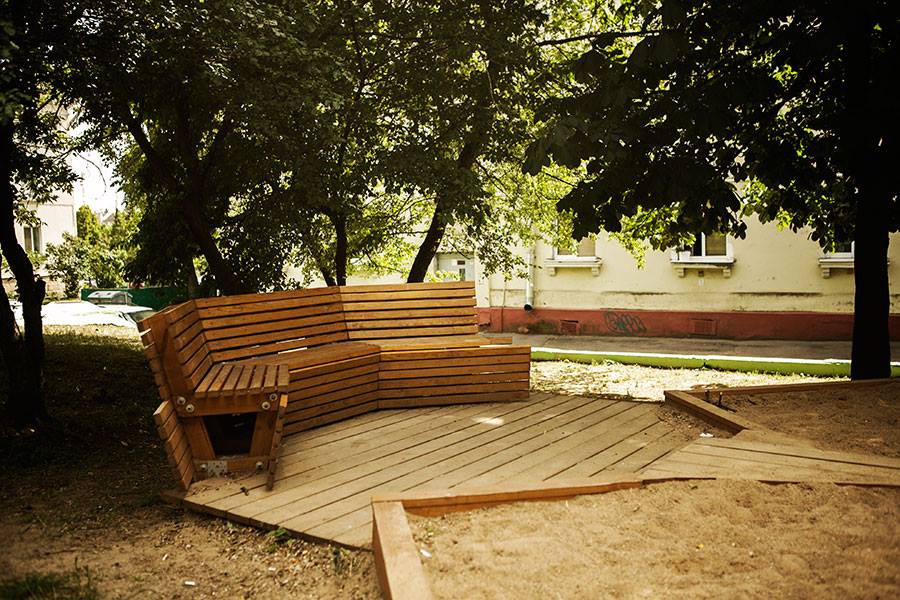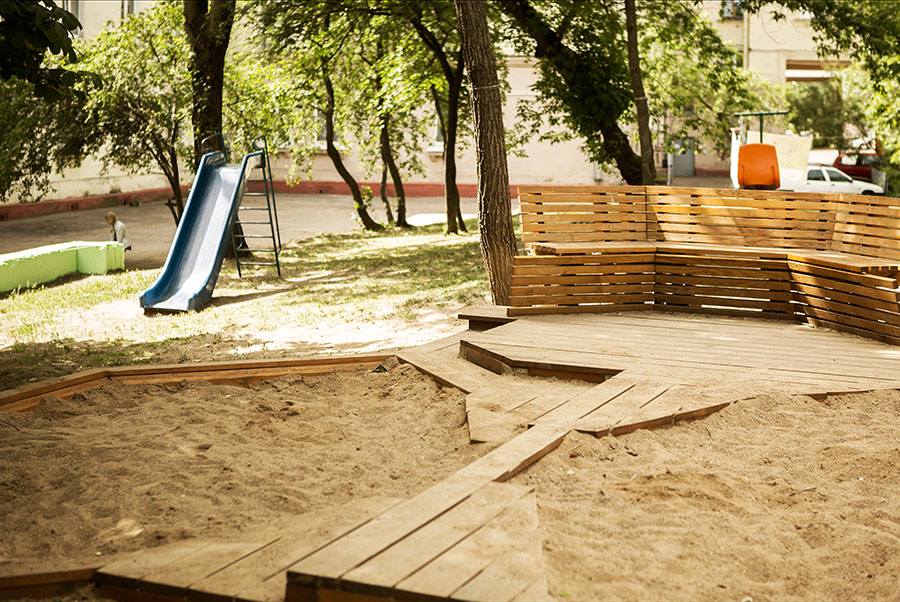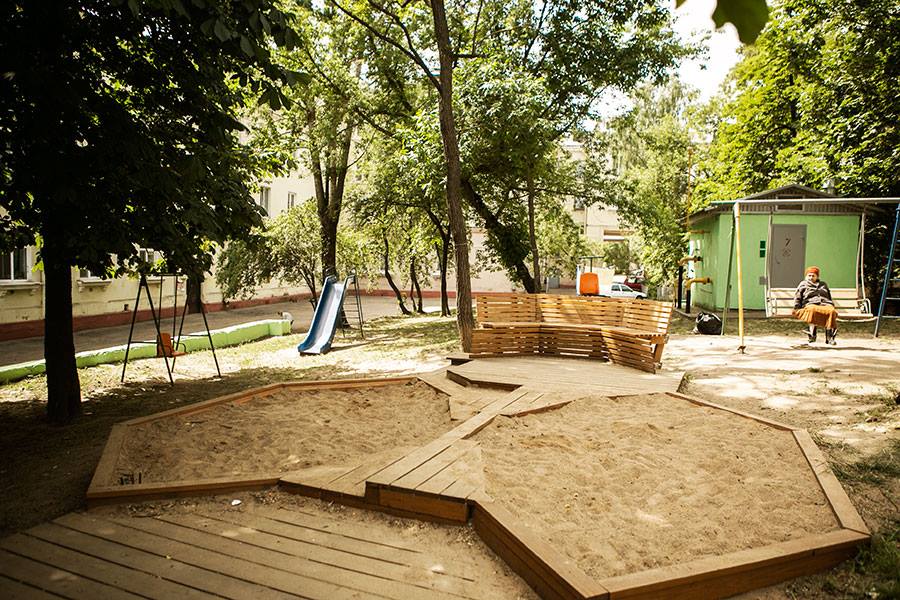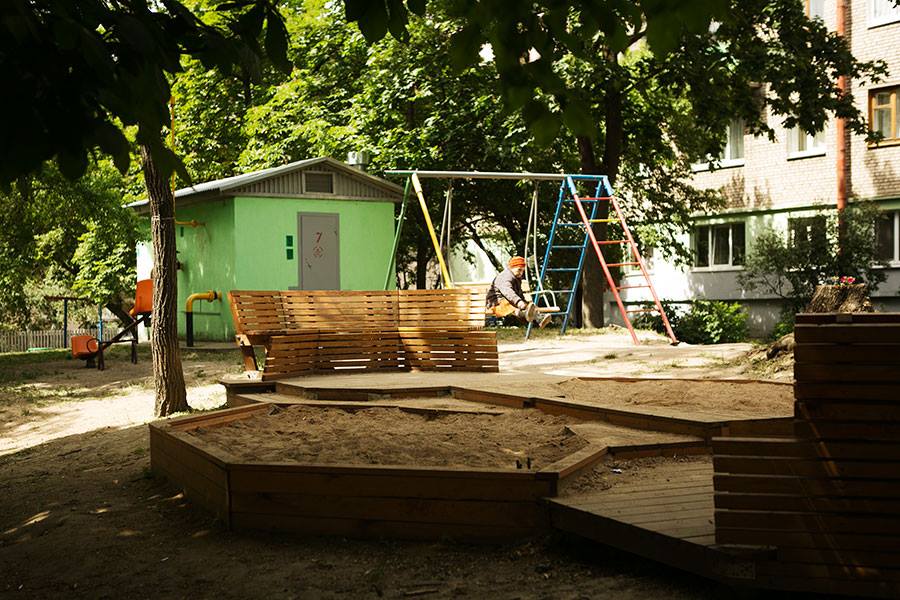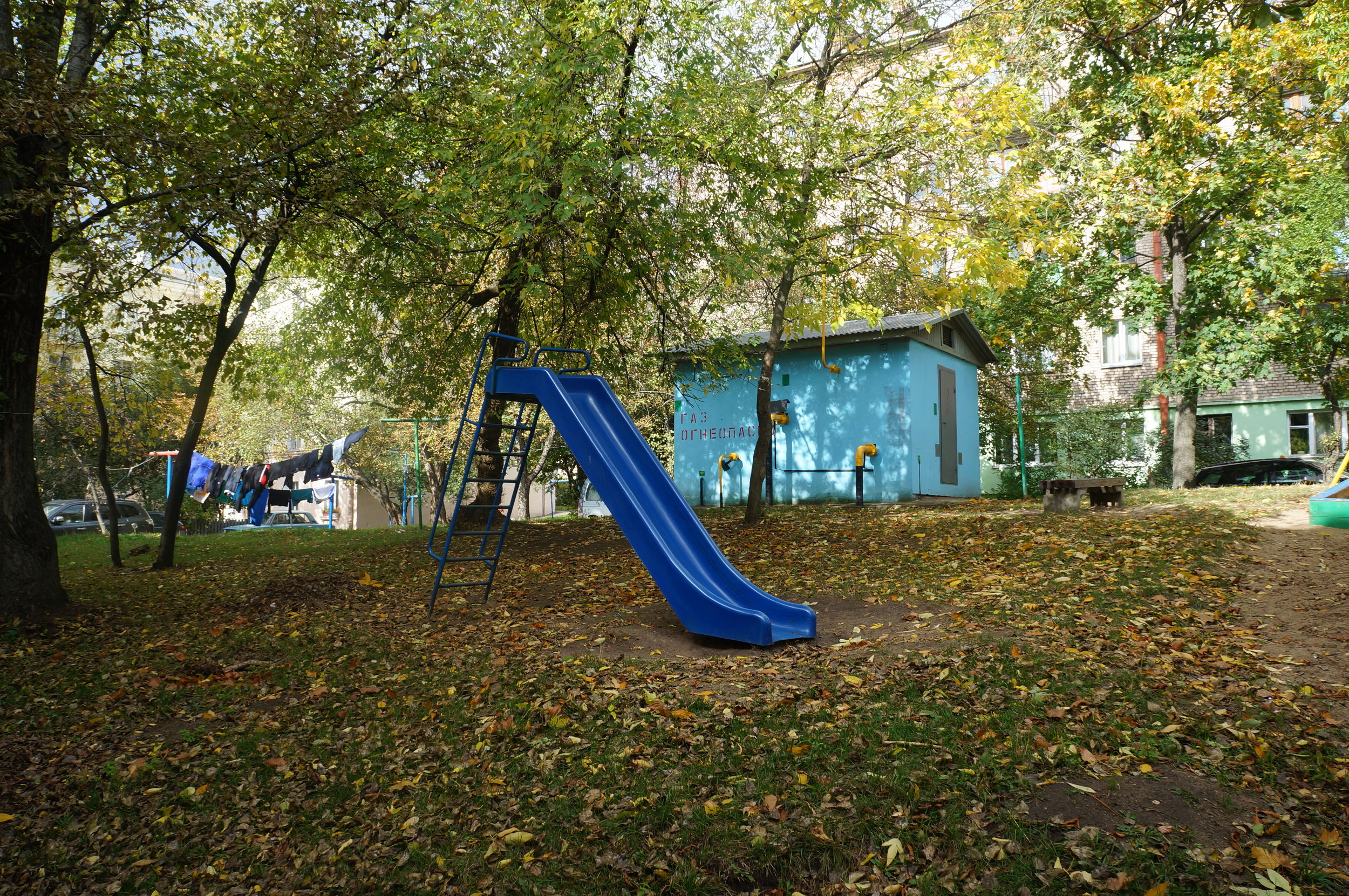Nadzeya Tsaranok, photo: Alexandra Kononchenko
Interview: Milota Sidorova
edits: Michael Higgs
Minsk Urban Platform is one of the most active civic expert platforms in Belarus. Young architects and sociologists focus on internationalising the education and practices of architects, as well as the themes of empowering citizenship and improving the quality of urban life. We have met one of these architects, Nadzeya Tsaranok, who is also an activist and a young mother, to talk about the peculiarities surrounding the installation of a simple children’s’ playground in one of the workers’ quarters in the capital of Belarus.
How did you get the idea for the playground?
It started as a workshop proposal during the Architectural Forum and our tutor proposed that we could work on it, if somebody would take over. I took upon this responsibility and we started from scratch. We knew nothing about participation and so we decided to create network of local activists initially - and this was our failure.
Why?
Because the locals got the wrong message. Soon we were the target of rumour and gossip that we were in opposition to the government or that we were terrorists who wanted to use this courtyard to detonate a bomb (no kidding). These locals had several theories to explain our work in their courtyard.
How did you win the community back?
We have realised it was our failure and that we had to seal ourselves in protection from the authorities. We went to the Chief Architect of Minsk. We got an appointment and after presenting the project he positively endorsed us. He would eventually designate the project to some of his assistants but it took almost four months until we received official permission to conduct a survey, organise participatory events and finally, to invest our own funds in the installation of the playground.
What happened later?
Before our intervention, there was nothing - just a slope. People didn’t use the space much but there is a local custom to hang their laundry on metal pillars there. Many flats here don’t have balconies, so people bring their own ropes to hang their laundry on. As soon as we started to talk about the playground, people argued that we would take away their places for their own laundry (which was not true or course, as the courtyard is extremely large). It was a very egoistical attitude. One person even called the police because they didn’t like the noise that children made while playing outside but amazingly this mobilized other residents from the block to address them, so that they would stop.
Old custom to hang the laundry in the courtyard, photo: Ndzeya_TsaranokJPG
Later, we decided to go to the municipal utility department to convince them to invest into this area. It again gave us an official shield for the people. However, to get people on the ground was a challenging task. At first, we put up posters announcing the community event. We felt it would not be enough, so we went there several times a week just to talk to the residents to remind them of the event. Of course, they knew, and they knew a lot about us but when the day of the event came, nobody appeared. Luckily, a friend from the area joined us. During the next week of construction, the first people came and after this it had a snowball effect.
How did you fundraise for this project?
I don’t know if I can answer this question, as it is a very delicate matter.
New children playground, photo: Nadzeya Tsaranok
What did you learn from this self-made participatory process?
A considerable amount. When the media came, the local authority took a good deal of the credit for it. One of the side effects was that parents installed a new swing financed from their own money. Belarusian people are also a very humble and grateful people, so in the end two letters of gratitude came. One was addressed to the Technical University for allowing us to work on this project. I remember the Dean was quite shocked and afraid because of this act - because what if people would have wanted him to do more?
However, they then decided to call a journalist to write a piece about it. The journalist obviously hadn’t contacted anyone from our group but – as Murphy’s Law goes – this journalist met a woman who was very negative about the whole project. Of course, the article was negative, saying that the infrastructure was in insufficient shape. As a response, the utility company decided to repair parts of the playground’s infrastructure.
As you can see, things do not work in a direct manner here but people can be mobilised by negative impulses.
How has your personal architectural evolution been?
After I had studied architecture I soon fell into a deep depression because I realised that I knew nothing. The education system is providing young people with 70-year-old information! I started to study on my own and by now I can say that everything I know I have learned independently. Initially, it was the self-taught history of architecture and then I joined a workshop with George Zaborsky at the Architectural Festival and this workshop ended with this children’s playground.
Where is it that you work?
Currently, I am not working for any company. I have worked previously but as I wasn’t given any project to lead I felt I was fading. I have leadership qualities - and so I must lead, just like I did with this project. To go back to an office would be regressive. I learn by practicing.
And how did you manage to work while raising your young son?
Now that you ask me, I really don’t know how I did it. I must have had an enormous desire to go on with the project and to finish it with good results. I was pregnant with Dmitry and was finalising the playground after he was born. My partner and family didn’t help me. He moved out from Belarus and while he helps me to secure my living financially, I still had to do it on my own.
Would you like to stay in Belarus or would you consider moving away?
I like what I’m doing right now, so I will rather figure out how I will manage. At the moment, I feel that I need more knowledge, so I am considering going abroad to study for my master’s degree.
I think we are in the right time and right place. I think people are starting to realise that courtyards are deprived, being turned into parking spaces and that this isn’t good. So, I say it is a good moment for us to be here. Changes can come from the bottom or from the top and I wish it could be from the top, otherwise you must go on a very difficult road with no guarantees and you can get yourself so angry that you may just end up scratching some cars from the frustration in how things are not moving.
Minsk Urban Platform is not going to change the system but we are committed to trigger the change needed and to show in practice how it can be done.
